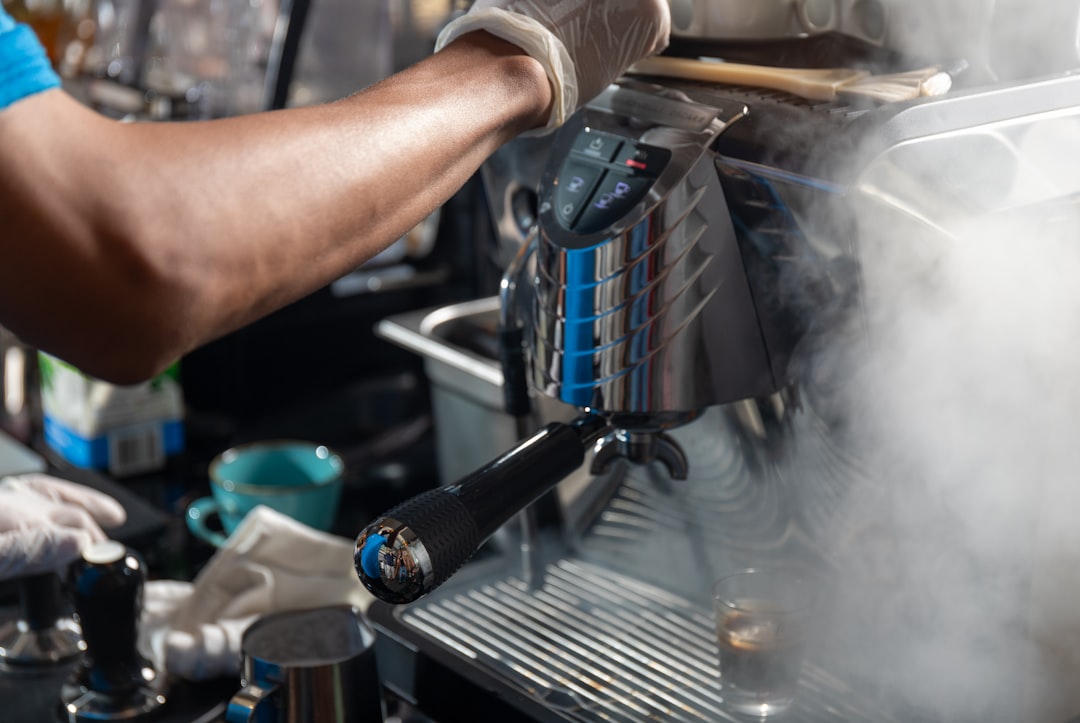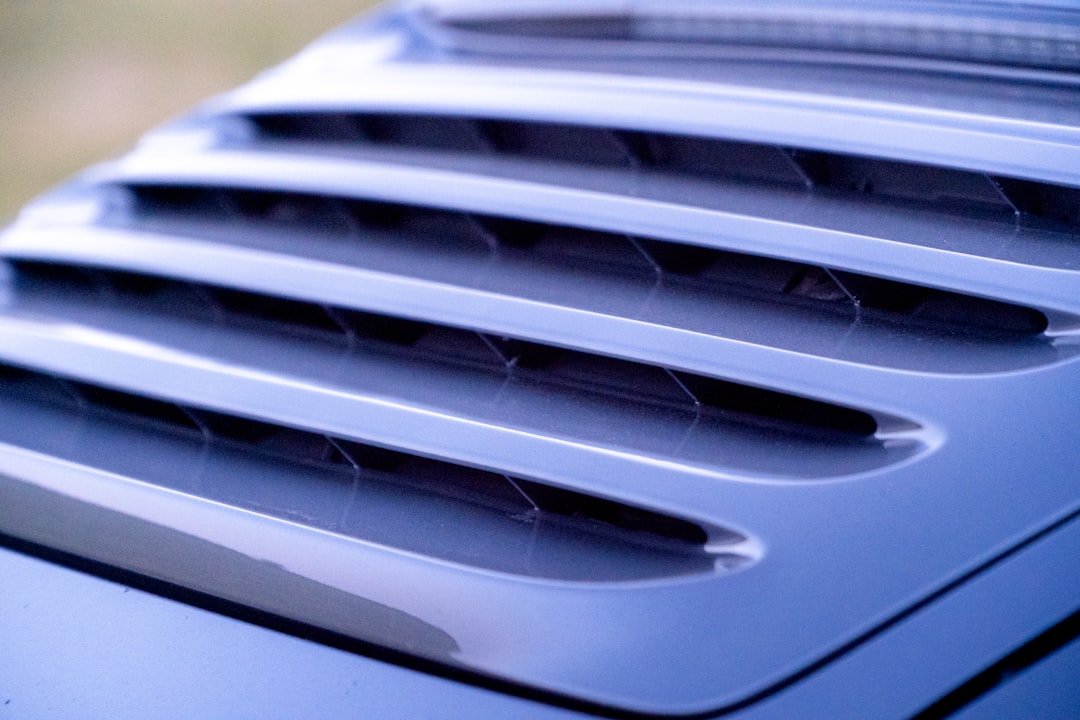

Engage prospects with a scan and streamline customer engagement with FREE QR code marketing tools by Sona – no strings attached!
Create a Free QR CodeFree consultation

No commitment

Engage prospects with a scan and streamline customer engagement with FREE QR code marketing tools by Sona – no strings attached!
Create a Free QR CodeFree consultation

No commitment
In today’s digitally driven world, QR codes in marketing have evolved from a novelty to a strategic powerhouse for bridging offline engagement with online action. For car heater suppliers, QR codes represent a frictionless and efficient approach to connect physical products and materials with dynamic online experiences, transforming in-person interest into traceable digital intent. Whether engaging wholesale buyers at trade shows or supporting auto technicians in the field, QR creates a direct line from the point of curiosity to the next best step.
The ability to provide instant access to product catalogs, installation videos, warranty registration, and customer support through a simple scan allows manufacturers, retailers, and distributors to accelerate sales cycles and reduce manual processes. Many suppliers have felt the pain of incomplete or outdated lead records, which too often results in mistimed outreach and missed segmentation. QR codes help close these gaps by capturing interactions the moment they happen, rather than waiting for a form submission or a phone call, especially when paired with the Sona QR product overview.
By integrating QR across customer touchpoints, car heater suppliers can improve marketing attribution, personalize buyer journeys, and unlock actionable insights that map each scan to measurable outcomes. When crucial stakeholders explore options in showrooms, workshops, or at events, QR-powered workflows provide immediate signals of intent for timely and relevant follow-up. For data strategy and measurement, see Sona offline attribution and how Sona intent data can guide follow-up.

Digital lead capture in the car heater sector is often hampered by the inability to track in-person or offline interest until it is too late. Printed brochures walk away with prospects, trade show conversations end without follow-up, and installers need quick answers but do not have the time to make a call. QR codes bridge these gaps by converting every physical interaction into a measurable and interactive digital moment.
To make QR work for lead generation, focus on replacing analog frictions with clear, scannable pathways to outcomes. Move beyond one-size-fits-all tactics by tailoring destinations to the intent behind each scan. A visit to a demo vehicle calls for spec comparisons and an inquiry form. A scan on a packaging label should route to installation support, spare parts lookup, and warranty registration. With a connected platform such as Sona QR, you can deploy this network of codes, track performance, and route leads to CRM workflows in real time.
Car heater suppliers that prioritize these steps can transform offline interest into digital proof of demand. The more context you capture at the scan stage, the easier it becomes to serve relevant content, route requests efficiently, and close deals faster. Start creating QR codes for free.

Car heater suppliers face persistent friction in moving prospective buyers from awareness to action. Physical materials like spec sheets, labels, and catalogs can inspire interest, yet they rarely include a reliable way to capture that intent. The result is anonymous traffic and untraceable engagement that erodes pipeline and revenue. QR codes solve these challenges by creating a bridge between the physical product world and a measurable digital journey.
Unlike a phone number or printed URL, QR codes are immediate. A single scan takes a technician to a wiring diagram, a distributor to an order form, or a fleet manager to a spec comparison that highlights lifetime cost of ownership. Suppliers can also change the content behind a dynamic QR code without reprinting, ensuring that every scan points to the most current and relevant asset. When combined with analytics, QR data enables suppliers to see which placements, events, or campaigns drive real action, and to optimize accordingly. For dealership-side applications, explore dealer QR codes.
As expectations for digital convenience continue to rise, QR connectivity gives car heater suppliers broader and more precise access to audiences who might otherwise remain invisible until a competitor has already engaged.

QR codes can flex to meet many types of business needs in the vehicle heating solutions market. Selecting the right format and destination ensures that each scan accomplishes a specific goal, whether that is education, conversion, or support. In this sector, formats that accelerate technical support and capture B2B intent tend to produce the highest return.
Dynamic QR codes are particularly valuable for car heater suppliers. They allow you to update links, swap assets, or run time-based promotions without reprinting labels or signage. A centralized platform such as Sona QR helps you manage all code types, control destinations, and track performance across placements in one dashboard.

Finding growth with QR codes means meeting your buyers where they already are. Automotive parts buyers and service professionals handle printed materials every day: boxes, invoices, POS displays, event signage, and more. Embedding QR codes on these assets turns passive touchpoints into measurable acquisition channels, especially when featured on event signage.
Start by mapping your sales and service journey. Identify friction points where interest often stalls or support requests pile up. Then place QR codes that route to the next best action for that context, such as requesting a quote, comparing models, or contacting technical support. The goal is to convert intent right when it appears, rather than hoping a prospect returns to your website later. For broader context, review these automotive marketing strategies.
These placements allow suppliers to prioritize outreach and reduce the risk of high-value leads slipping through the cracks due to gaps in offline data capture.

QR codes shine when they match the intent and urgency of the moment. In the car heater category, you can streamline product selection, simplify support, and accelerate advocacy with targeted deployments that surface buyer readiness across the lifecycle.
Each use case turns a physical surface into an actionable digital pathway that produces measurable outcomes: shorter decision cycles, fewer support escalations, and stronger post-purchase advocacy.
Each scan is a signal that reveals intent, context, and timing. By deploying unique QR codes across your funnel, you can segment audiences automatically and use that data for precise retargeting and follow-up. The key is to use different codes for different journey stages, then sync those segments into your CRM and ad platforms. For execution ideas, see Sona’s retargeting playbook.
For car heater suppliers, useful audience distinctions include fleet managers versus retail customers, installers versus parts procurement teams, and new prospects versus returning buyers. A fleet manager scanning a TCO comparison at a trade show should not receive the same follow-up as a technician scanning an installation guide in a service bay. The more granular your segments, the more relevant your messaging and offers.
With this approach, each QR code becomes a smart entry point that enriches your database. You do not rely on assumptions. You target based on real behavior and measured intent.
QR codes are the connective tissue that ties your offline presence to your digital strategy. They make every physical impression measurable, while giving prospects an easy way to move forward. For car heater suppliers, this integration is especially important because so many interactions happen in the field, in shops, and at events where laptops are not open and attention is limited.
Integrate QR at the media touchpoints that matter most for your business. Then use a central platform to manage all codes, monitor performance, and sync scan data with your CRM. The result is a unified view of engagement across channels that were previously difficult to track or attribute.
QR codes serve as the offline onramp to your digital marketing engine. With a platform like Sona QR, you centralize code creation, routing, and analytics, and you sync scan activity with your CRM and ad platforms to close the attribution loop.
A successful QR rollout requires structure. You need to align each code with a business goal, ensure it is easy to scan in real-world conditions, and measure performance to optimize quickly. For car heater suppliers, that means focusing on the moments where intent is highest: product selection, installation support, and post-purchase engagement.
Use the following steps to plan and launch a cohesive QR program that replaces manual processes with measurable outcomes. Build slowly across your high-impact channels, then scale once you see what works best for your audiences and placements.
Start with a clear outcome such as increasing quote requests from trade shows, reducing support calls through self-serve installation content, or driving warranty registrations from packaging. Map the buyer journey and identify where a scan could remove friction. In this vertical, common goals include converting event interest into qualified leads, arming technicians with on-demand guides, and capturing reorder signals for seasonal maintenance.
Define success metrics for each use case. For example, aim for a specific scan volume per event day, a target percentage of packaging scans that result in warranty activation, or a reduction in time-to-first-response after a support scan. Align stakeholders on these goals and ensure your QR destinations are designed to deliver them.
Select static QR codes when you have fixed destinations such as a timeless brochure PDF or an evergreen contact page. Use dynamic QR codes for anything that benefits from updates, A/B tests, per-placement tracking, or retargeting. Dynamic codes are ideal for fast-changing pricing, promotions, or spec updates, and for campaigns that require attribution by channel partner or location.
In a distribution-heavy market, future flexibility matters. Choose dynamic codes for labels, packaging, POS, and event assets to avoid reprinting when content changes. With Sona QR, you can update destinations, layer tracking parameters, and integrate with your CRM without altering the printed code.
Design your codes for the environment they will live in. Add your logo, brand colors, and a clean visual frame for visibility. Include a benefit-driven call to action such as Scan for install guide, Scan for fleet pricing, or Scan to compare models. Make sure the code size and contrast fit the viewing distance: larger codes for signage and vehicle placards, smaller codes for invoices and product labels.
Test extensively before deployment. Check scan reliability on different phones, under variable lighting, at typical viewing angles, and through protective laminates or curved surfaces. Confirm that links load quickly and that forms are mobile friendly. If you are using UTM parameters, verify they persist correctly and do not break on redirects.
Roll out codes in the places most likely to drive action. Use booth signage, demo vehicle placards, and handouts at industry conferences to capture top-of-funnel interest. Add codes to parts packaging, installation manuals, and service stickers for technician workflows. Place codes on invoices, delivery slips, and warranty cards to trigger post-purchase behaviors such as reviews, registrations, and reorder requests.
Match the placement to audience behavior. For shop counters, use countertop displays with clear CTAs. For on-vehicle displays, size up and test from typical viewing distances. For direct mail to fleet managers, include a QR that links to a personalized fleet pricing page with a short form to request volume quotes.
Instrument your program from day one. Use Sona QR or a similar tool to track scans by time, location, device, and campaign source. Monitor conversion rates from scan to form submission, from content view to inquiry, and from inquiry to quote or order. Watch for drop-off points and improve page speed, layout, or copy accordingly.
Test variations. Experiment with different CTAs, visual frames, and destinations. A/B test landing pages that compare models side by side versus a single-product deep dive. Iterate on placements across events and retail displays to find the highest-yield surfaces. Feed these learnings into your next print run and event plan to steadily improve returns.
A disciplined checklist sets the foundation for scale. Once you confirm which formats, messages, and placements produce the best leads, replicate them across distributors and regions, and use dynamic codes to keep content fresh without sacrificing measurement.
Attribution is a longstanding challenge in the car heater category. Offline materials create interest, but connecting that interest to pipeline often proves difficult. QR codes change this by generating trackable engagement events that you can tie to forms, conversations, and ultimately, revenue. With the right platform, you can see beyond the scan to understand what happened next, including multi-touch attribution.
Start by establishing baseline metrics for each placement and use case. Track scan volume by day and location, page load performance, conversion rates from scan to action, and downstream outcomes such as quote requests or trial orders. Over time, look for patterns that highlight which products, messages, and channels are producing the most sales-qualified activity. This data helps you optimize spend and refine your content strategy, backed by solid revenue attribution principles.
Benchmarks will vary by channel and audience. As a starting point, aim for fast-loading mobile pages, short forms with clear benefits, and QR placements that are highly visible at the moment of need. Compare scan-to-form conversion rates across placements to identify high-intent surfaces, then replicate those patterns in new locations and campaigns.
Expanding your QR program is about consistency, context, and continuous improvement. Lean into placements that reflect how your audiences evaluate and use your products, and build automated workflows so every scan leads to action without manual intervention.
Focus on the tips that match your goals and your most common media types. In this vertical, that often means event signage, packaging, POS displays, invoices, and direct mail to dealers and fleets.
Creative deployments can spur adoption. For example, print QR on a magnetic service sticker for the engine bay that links to heater-specific maintenance tips and reorder options. Include a QR on seasonal postcards to fleets that launches a volume pricing request form tied to a winterization checklist. These touches boost engagement and keep account profiles enriched for future campaigns.
Persistent challenges in the vehicle heating solutions market include missed prospects, anonymous engagement, and slow pipeline movement. QR codes offer a practical remedy by connecting physical touchpoints to digital experiences that are trackable, updatable, and designed for action. From event floors to service bays, a well-planned QR program turns every interaction into an opportunity for education, follow-up, and measurable growth.
The strategic use of QR codes positions car heater suppliers to increase lead quality, shorten sales cycles, and gain real-time analytics across every customer touchpoint. With a platform like Sona QR, you can manage codes at scale, update content instantly, and attribute revenue with clarity using Sona.com. For suppliers ready to capture demand at the source and outperform analog competitors, now is the time to make QR codes a core part of your marketing and service strategy.
QR codes have revolutionized the car heater supplier industry by turning traditional product access into seamless, measurable customer engagement. Whether it’s streamlining product information delivery, driving new customer acquisition, or enhancing post-sale support, QR codes eliminate friction and provide instant, mobile-friendly access that turns every interaction into a valuable touchpoint. Imagine customers effortlessly scanning a code to get installation guides, warranty details, or exclusive offers—creating a smoother buying journey that builds loyalty and boosts sales.
With Sona QR, car heater suppliers can create dynamic, trackable QR codes in moments, update campaign content anytime without costly reprints, and connect every scan directly to actionable insights and revenue growth. No opportunity slips through the cracks when you leverage real-time data to optimize your marketing and customer service efforts.
Start for free with Sona QR today and transform every scan into a new customer connection, a satisfied buyer, or a repeat sale.
The article does not list specific top car heater suppliers but focuses on how suppliers can use QR codes to improve marketing and sales.
Choose suppliers who use dynamic QR codes to provide updated product information, technical support, and personalized buyer journeys, ensuring timely and relevant engagement.
The article does not detail types of car heaters but emphasizes digital tools like QR codes for supplier marketing and support.
Suppliers can encourage customer reviews using QR codes on invoices or thank-you cards that link directly to review platforms such as Google Reviews.
Look for suppliers who integrate QR codes for instant access to product catalogs, installation guides, warranty registration, real-time support, and trackable engagement data.
Use Sona QR's trackable codes to improve customer acquisition and engagement today.
Create Your FREE Trackable QR Code in SecondsJoin results-focused teams combining Sona Platform automation with advanced Google Ads strategies to scale lead generation

Connect your existing CRM

Free Account Enrichment

No setup fees
No commitment required

Free consultation

Get a custom Google Ads roadmap for your business






Launch campaigns that generate qualified leads in 30 days or less.
